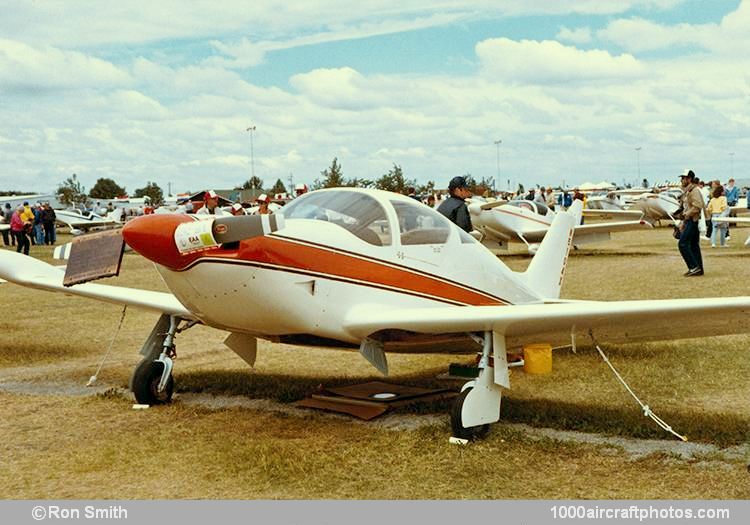04/30/2015. Remarks by Walter van Tilborg and Johan Visschedijk: "The Celerity was designed by Larry Burton, Bruce Boylan and Dave Melby. Design and construction of the wood and composite aircraft started in 1979, the fuselage was largely based on that of the K&S Cavalier. It had optional wing tip tanks and a retractable tail wheel landing gear, although at least one Celerity (N964GR) was completed with a fixed gear. The two-seatdesign was suited for engines in the 140-180 hp range (including modified automotive engines), the prototype had an 160 hp Lycoming IO-320-B1A engine. Registered N5104X it was first flown on May 18, 1985, and during the 1985 EAA Oshkosh Convention, the prototype was awarded a best Workmanship Award.
The Celerity was marketed for amateur construction by Larry Burton's company Mirage Aircraft Inc. at Klamath Falls, Oregon. The first plans-built aircraft (N180JG) was built by Harold J. Glencross of Tucson, Arizona, and fitted with an 180 hp Lycoming IO-360 engine, this aircraft was flown in 1992. Examples of the Celerity were built with and without wing tip tanks, while the Celerity prototype was later used to test modified wings with tanks in the wing leading edge (without the tip tanks).
In 1995, after the 1994 death of Larry Burton, Mirage Aircraft was continued by Eldon and Karen Helmer at Prescott Valley, Arizona. Their developed model, the Marathon, had a fixed type landing gear (choice of tricycle or tail wheel), conventional instead of split flaps, a sliding canopy, optional wing tip tanks and several other improvements. The Marathon was suited for the same engine types as in the Celerity. The first Marathon (N683DC) was completed by David R. Christensen of Brigham City, Utah. It had a fixed tail wheel landing gear and an 160 hp Lycoming IO-320 engine, it was first flown on June 28, 2011."
